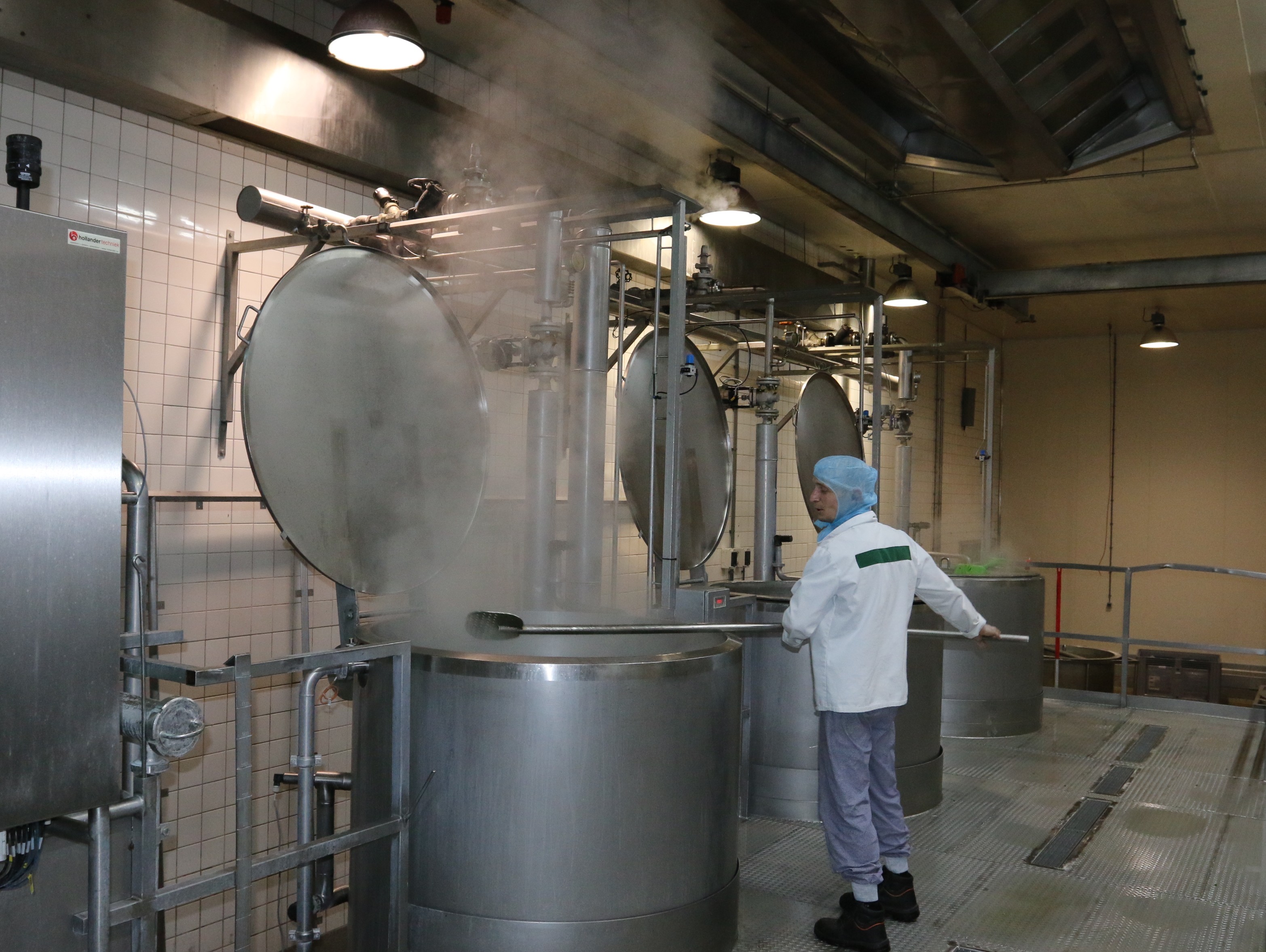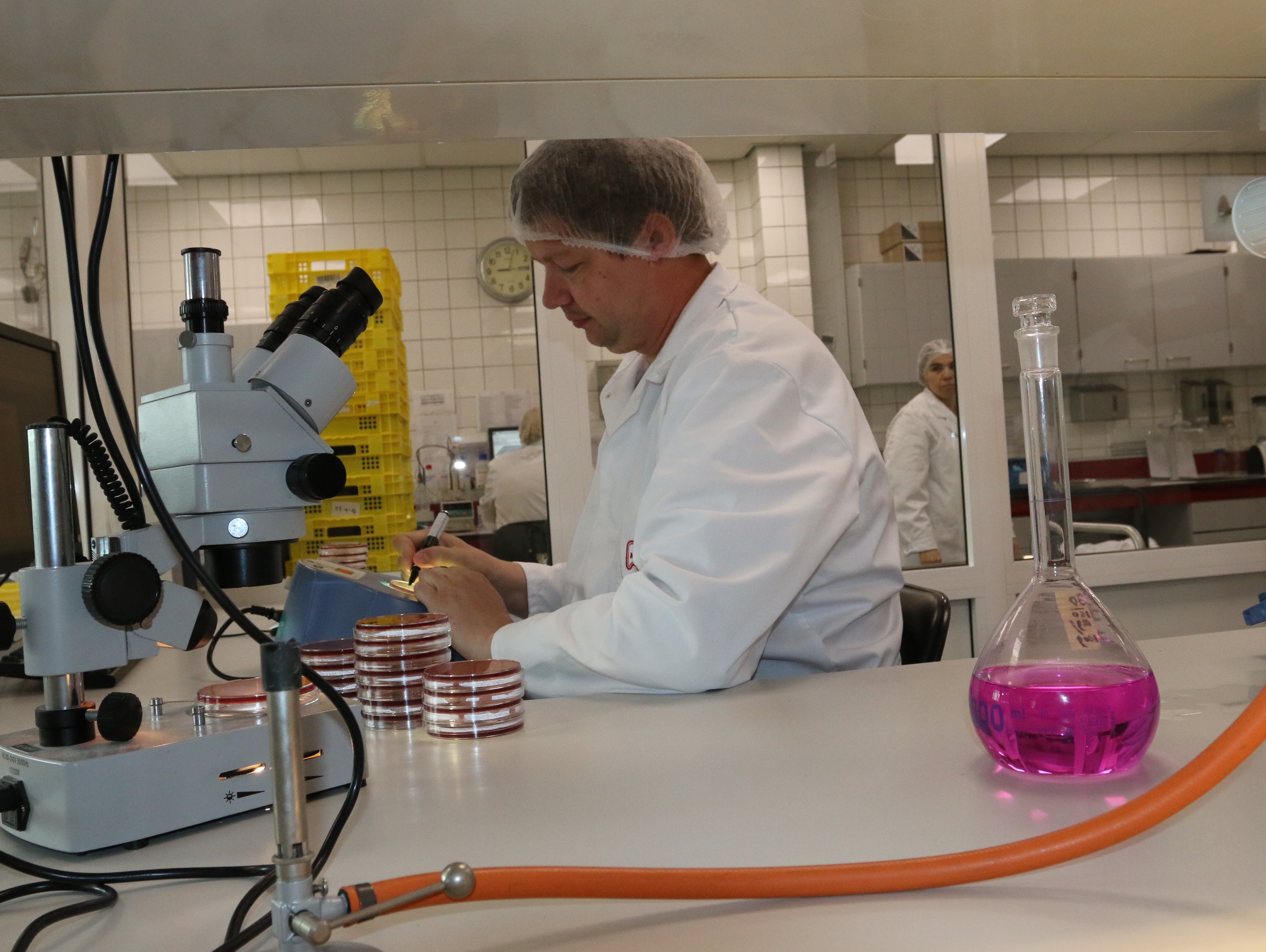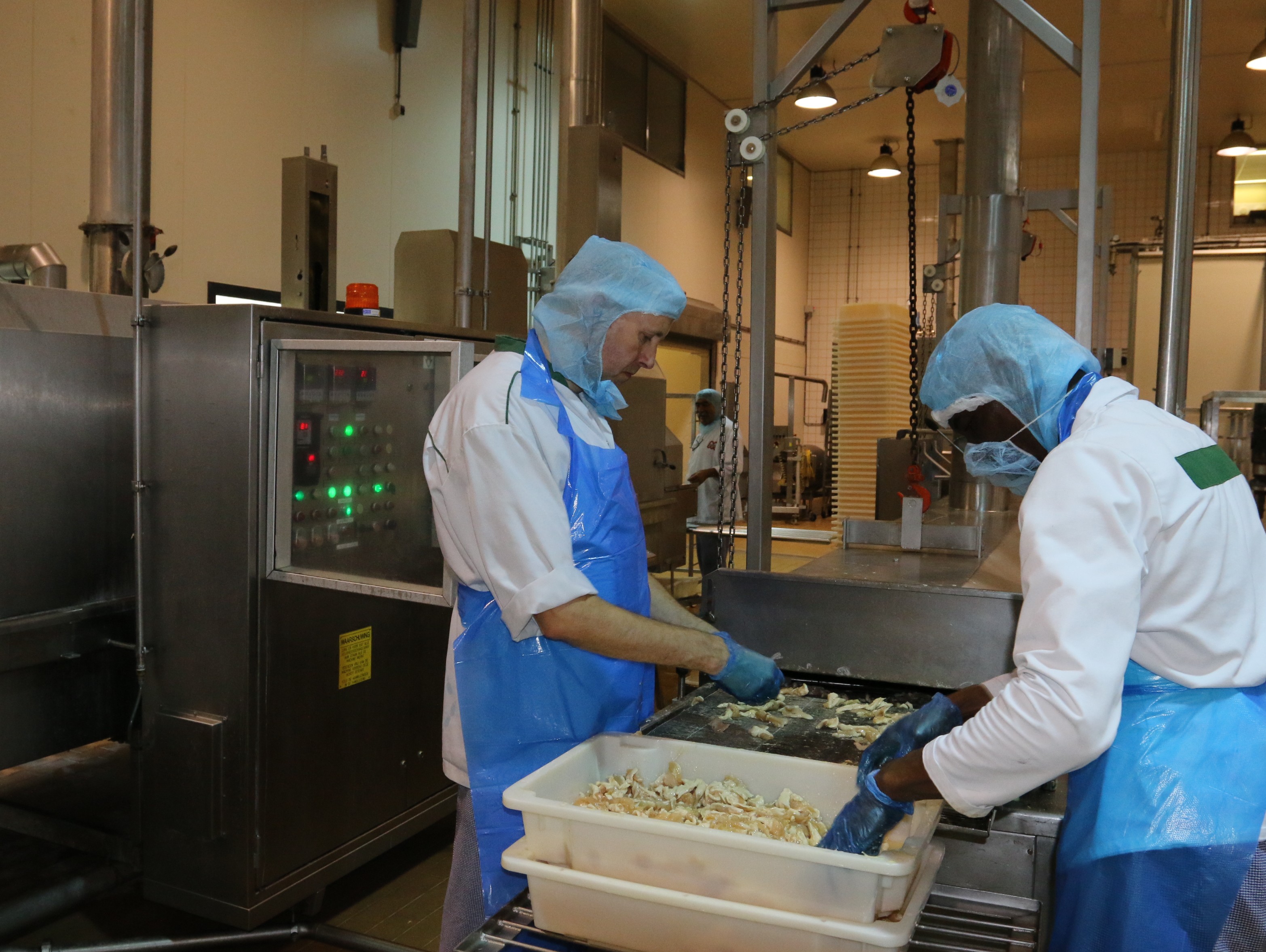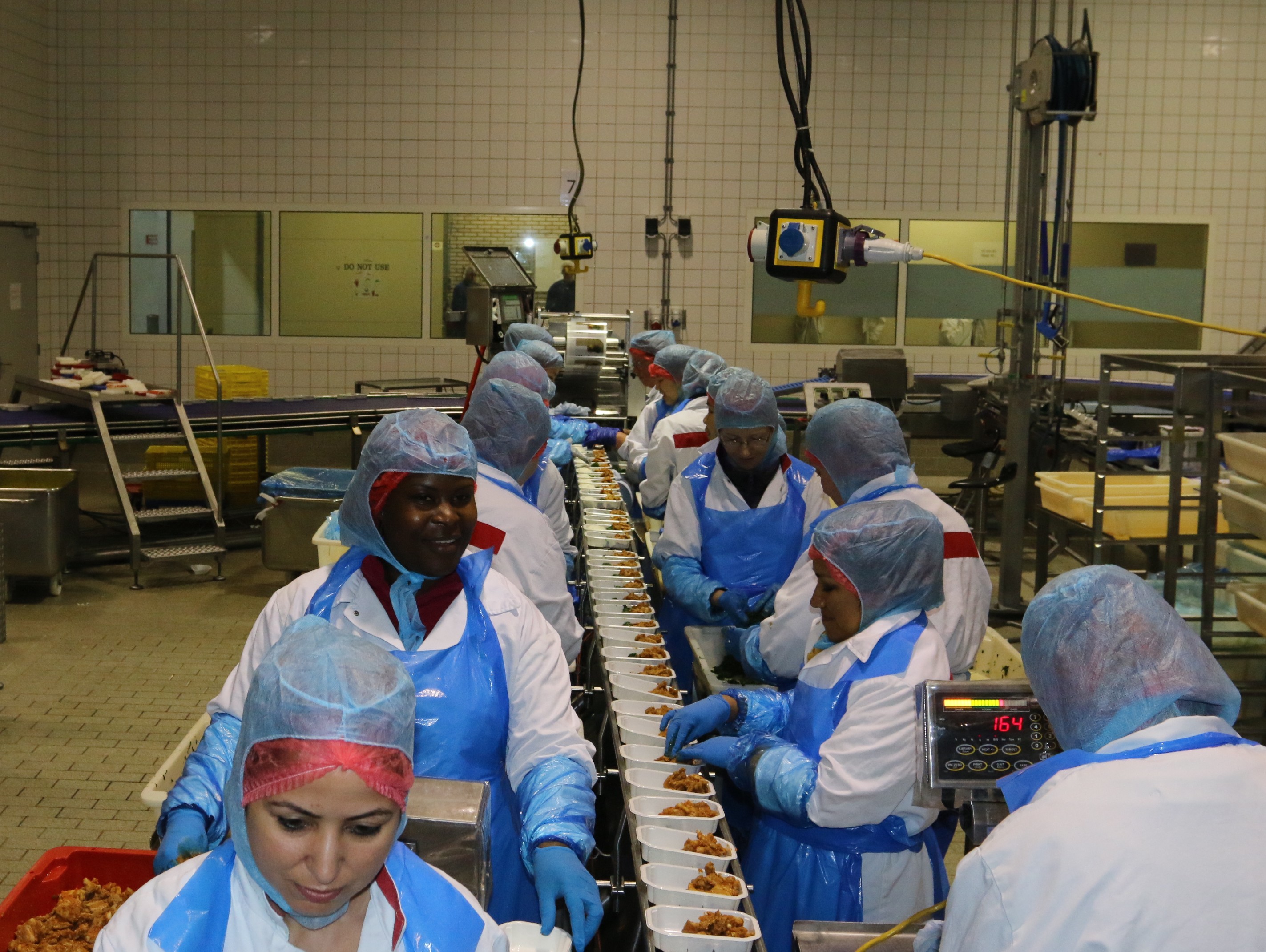
At meal-solution manufacturer Marfo, food safety is fully integrated into the company’s operations. The QA department forms the heart of this approach and supports the other departments every step of the way, from the sourcing of raw materials up to and including the end-user experience.
“Food safety hinges on motivated and qualified employees.” Those are the first words of Mo Achelhi, QA manager at Marfo (which became independent from Martinair in 2008), as he begins explaining how the company safeguards food safety. Although insights into food safety have changed over the years, a ‘food-safe’ approach has been an integral part of Marfo’s day-to-day operations for more than 40 years, and hence the employees fully support the company’s focus on food safety.
“We consider it important to design the process in such a way as to ensure that any factors which could affect food safety have a minimum impact on day-to-day operations. If food safety considerations mean that workers are required to perform extra tasks, we always explain the reason to those concerned. That creates understanding, which in turn keeps motivation high.”
Marfo is specialised in the daily production of 100,000 high-quality fresh frozen meal solutions and meal components for airlines and the healthcare industry. Supplying safe products is essential. To ensure food safety, the QA department provides support to the other departments every step of the way, from the sourcing of raw materials up to and including the end-user experience. “Innovation is inextricably linked to food safety, as is close collaboration between departments and continually keeping each other informed,” says Achelhi. To illustrate his point, he explains the evolution process from an idea to a meal on an aeroplane or in a hospital. “The starting point is the ‘Creadome’ department, led by Michelin-star chef Pascal Jalhaij. That’s Marfo’s development and inspiration centre where the culinary team works with guest chefs from around the world on creating a wide range of authentic and ethnic dishes.” The Sales department acts as an intermediary, explaining the customers’ requirements to Creadome and vice versa. Quality Assurance (QA) conducts risk analysis on Creadome’s innovative ideas in a screening process. “It’s important to establish whether the meal can be produced safely or whether any risks are associated with it. If there are any potential issues, the recipe is sent back to the drawing board.”

After receiving customer approval, Creadome works with a process technologist to develop the meal into a large-scale version. The Purchasing department then approaches approved potential suppliers to source the necessary quantities of the required ingredients. “We explore options for responsible and sustainable sourcing both locally and globally,” continues Achelhi. “Once that is agreed, the new meal’s ‘passport’ is set up by the Data department. After the various departments have validated the information, Data monitors information such as calculations, technical product details, nutritional values, customer requirements or restrictions and suchlike – all in collaboration with QA.”
The raw materials are key to the final result and the ultimate quality of the meal solution or meal component. “Each raw material is continually compared against the specification, for every delivery, to ensure that the supplier is complying with our agreement. It’s also crucial that we know the origin of every ingredient,” emphasises Mo Achelhi. “Recent incidents involving batches of mixed meat demonstrate the potential impact of an inadequate traceability system. Therefore, an effective traceability system is one of our hard requirements during supplier audits. We’ve further tightened our supplier selection and assessment procedures.” Achelhi’s views on the recent food scandals and fraud cases are clear: “It’s impossible to say that they will never happen, but we do shoulder our responsibility. For example, we’ve tested for ‘foreign DNA’ from pigs and horses, among other animals. The European Parliament recently approved a proposal for a harmonised control system for companies in the food chain. At Marfo, we welcome that proposal from the perspective of fair competition. A food-safe approach entails extra costs. If competitors – who, for us, could be anywhere in Europe – are allowed to adhere to lower standards, their costs will also be lower which in turn benefits their margins. Because the margins in the food industry have become so tight nowadays, that could make the difference between a potential customer placing an order with us or not.”
’Food safety means close collaboration between departments’
The Process Kitchen, which is where the meals are manufactured using the tested and approved ingredients, is a high-tech environment with computer-controlled, automated processing equipment such as baking lines, cooking lines and sauce mixers. A team of qualified cooks prepares all the necessary components. The quality team continually monitors progress to ensure that it completely mirrors the customer-approved meal, both in terms of the processes used and the taste sensations. Mo Achelhi: “Needless to say, our aim is that 800 litres of sauce produced in a single run exhibits the same sensory characteristics as the ½ litre of sauce developed in the lab.”
The Assembly department then puts together the meals using the relevant components. The Creadome chefs keep a close eye on proceedings and check that the end product still matches what has been agreed with the client. The QA department takes samples of each meal. “The monitoring programme starts immediately: microbiological analysis, technical assessment, sensory evaluation and – if applicable – allergen and sodium testing. We work with a ‘positive release system’: the meals may only be dispatched when all the testing phases have been completed successfully.” After assembly, the packages are sealed and the meals go into the gyro freezer for two hours where they are frozen. The Packing department is waiting for them when they exit the freezer on the conveyor. Before they are packaged for transport, they first pass through a metal detector. From there, another conveyor takes them into cold storage where the crates and boxes are automatically sorted, stacked on pallets and stored until they are ready for shipment to the custom

In order to test and evaluate procedures internally, the QA specialists are closely involved with ensuring that the day-to-day production processes run smoothly. They supervise the correct application of all procedures, making a note of any shortcomings and discussing them with the person responsible for the relevant process on a weekly basis. “They decide whether the procedure should be fine-tuned to bring it even closer into line with reality. The documented food-safety quality system is so well aligned with the practical situation that the various steps fit together just like a key in a lock. In addition to the recording of management measures, the continual monitoring of the defined Operational Prerequisite Programmes (OPRPs) and the critical control points (CCPs) forms the backbone of our food safety system,” states Achelhi.nts’
In terms of food safety systems, Marfo complies with HACCP and BRC as well as FSSC22000. “Apart from our desire to further tighten our own processes, we also implemented BRC in response to requirements of our British customers in the airline and healthcare industries,” explains the QA manager. “We added FSSC22000 in 2010. The advantage of this international, integral management system over other food safety schemes is its broader focus; it doesn’t only zoom in on direct manufacturing processes, but also covers all the facilitating business processes that can affect food safety.” Before introducing FSSC22000, Marfo spent many years following the principles of the ISO9001 quality management system alongside the BRC and HACCP food safety systems. “In effect, by integrating those systems – the BRC basic conditions programme, the HACCP food safety system and the ISO9001 principles – we already had an FSSC system in place. The introduction of FSSC22000 as a complete standard was the ideal opportunity and an extra stimulus for us to update existing tests again,” says Achelhi.

Marfo’s food safety system is set up in such a way that maintenance is a continuous process. “Because the management review is held monthly, we have to make few – if any – changes before the annual audits,” explains Mo Achelhi. “A smooth-running system needs regular lubrication to keep it operational all year round, not just an annual spring clean. Ongoing maintenance means that there’s little need to prepare for audits, such as the ISO14001 which is coming up soon for us.”
Source: Marfo